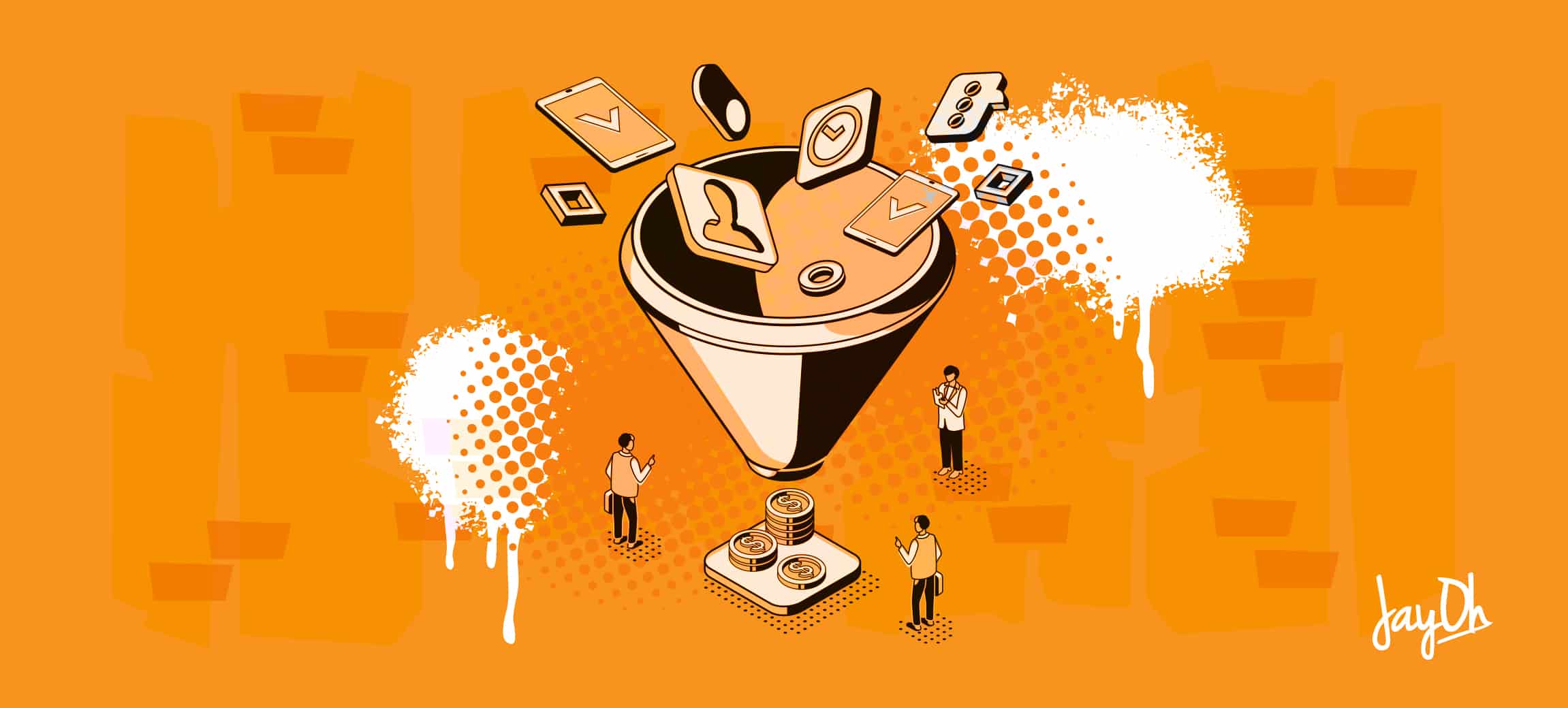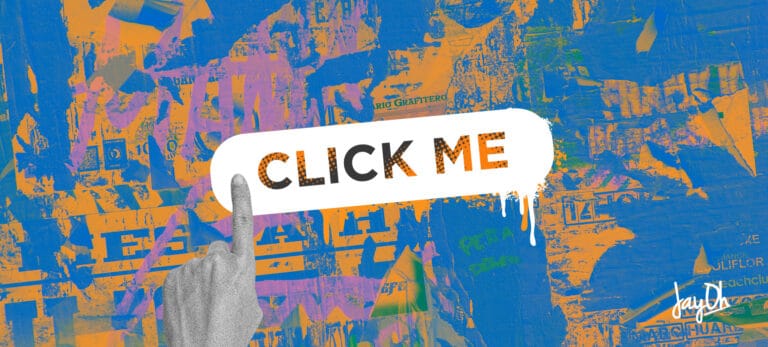Sign Up Funnel Conversion Hacks
You know the feeling. You’ve put all this time and effort into creating a set of beautiful landing pages, and you’re confident that they’re going to convert like crazy. But then… crickets. Why aren’t people signing up? If you’re struggling to get people to convert on your sign up forms, never fear! Check out these Sign Up Funnel Conversion Hacks and start seeing results in no time. Trust us, your list will thank you.
Flip the Funnel
Flip the Funnel is all about getting users to experience the awesome powers of your product before they’ve even signed up – and it can work wonders. Allow users to have a look around, convert a file, test out its features, but then make it clear that signing up is the only way they’re going to get full value out of your offering! This tactic really pays off when the time it takes for users to get value from your product is short. After you let them experience the value of your product, you’ll have an easier job convincing them to sign up e.g. after a user converts a file and before downloading it. Keeping them hooked enough to wait will be much more straightforward than with products where a long sign-up process comes before you give any sort of reward, making this technique definitely worth considering.
Priming Steps
Before customers sign up for your product or service, you want to be sure they’re aware of the full value proposition. That’s why priming steps are such crucial additions to any signup flow. Add an extra step that explains why users have to fill it out and what they’ll get in return – it doesn’t add friction to the process but rather reassures them, leaving them comfortable enough to proceed further. It takes forethought and consideration too reduce the potential uneasiness any user might feel when starting something new, but even with an added step, it’s worth it!
Form Field Focus
Have you ever been to a website with an annoying form field that made you want to leave? No one wants their user experience interrupted, so it’s best to focus their attention on the first form field. Automatically setting the focus to it and then fading out the background around the form will direct users’ attention right where you want them–so they can enter their info without any confusion. After all, there’s nothing more satisfying than a good experience with no unnecessary bumps in the road.
Pre-Qualify Leads at Signup
If your product or service is targeted away from the budget-conscious, low-traffic customers, adding questions that’ll help manage expectations at signup can be beneficial. If you suggest visitors include website traffic in your signup form, setting an entry point everyone needs to surpass in order to proceed, you’ll save yourself and your sales team lots of time with fewer unqualified leads. While this could lower conversion rates, it makes sense to draw a line somewhere and avoid onboarding users that won’t gain anything from your offerings.
Don’t Make Forms look like Forms
People don’t like filling out forms; it’s a hard truth in the world of web design. That’s why the idea of making forms look like anything but forms is gaining popularity. People should be encouraged to fill out the form — not turned away when they see it for what it is! A great way to do this is by using large clickable images, eye-catching colours and toggle sliders that make responding to questions more fun than it feels like work. People will be pleasantly surprised when they realise that all this clicking and moving around was actually a form, and chances are they won’t even think twice about spilling their information into the system.
Upfront Progress
The concept of upfront progress is one that many working professionals are highly familiar with – the sense of accomplishment and drive to cross off ever item on a checklist or fill up a pre-stamped card makes people feel as if they’re one step closer to completion when they’re actually far away. Harnessing this same principal online can be as simple as showing users the progress they have already made, whether it’s a crossed-out item on their onboarding checklist, or even better – having visible goal posts like a bar indicating 50% complete after only having clicked a popup. By consistently making progress feel attainable and visible, your users will likely remain engaged much longer than anticipated.
Breadcrumb Technique
If you are planning to ‘ask the big questions’ of prospects, the breadcrumb technique is an effective way to get the information you need without requiring users to give away massive chunks of their personal info. The trick is to start with micro-conversion steps, such as asking prospects a few easy questions that don’t require them to stay anonymous. For example, if you’re a growth agency, then start by asking what funnel step the user needs help on most at the moment; or if you’re a software dev shop, what’s the scope of their project – mobile/web/both. Asking these types of questions keeps things running smoothly and allows prospects to remain anonymous until they are ready for bigger requests like quotes or ebook downloads. However, for an even better response rate, use dropdowns or radio buttons instead of open-ended fields as it makes answering much easier and faster.
Autofill Form Fields
Just imagine how much easier life would be if we could all make use of autofill; with everyone always on-the-go, having the ability to easily and quickly complete forms with a few clicks just seems too good to be true! Luckily, there is an amazing product called Clearbit Forms that provides this type of convenience, allowing you to automatically fill forms based on enriched data but still leaving room for the user to edit the form input if necessary. The less typing users have to do, the more likely it is that they will actually end up completing the form – and that’s something we can all get behind!
Move Difficult Steps to the End
Avoid the “too much too soon” mistake when designing forms and signup steps – Make sure your configuration of steps, form fields, and high-friction requests takes into account the weight of first form fields – make them easiest to fill. Move riskiest highest friction signup/form steps to the end of the flow in order to maximize completion rates. This is based on the principle of completion bias: Humans feel a certain pleasure when completing a task and this compels them to complete all the required tasks to finish something no matter how difficult they are or how long it may take. Just remember, if you want people to complete your forms, put all your heavy lifting at the end!
Single Sign-on
Let’s all face it – logging in and out of various accounts can be a real struggle sometimes. That’s why single sign-on is such an incredible solution! It lets you integrate one login that one may use to access multiple different accounts with ease. Think of it as the equivalent of a master key to every room – no more reaching into your pocket for a different key each time and showing ID everywhere you go. Plus, if you prefer using existing accounts like Facebook or Google, these providers allow for ‘Signup with Google’ or ‘Signup with Facebook’, enabling users to enjoy nearly effortless authentication for form fills. All in all, single sign-on makes life much easier – why not give it a try?
Now that you know all of the insider secrets to getting people to fill out your forms, what are you waiting for? Go out and conquer those conversion goals! If you need a little extra help, we’ve got plenty of experts on our team who would love to share their knowledge with you. Just reach out and we’ll get you set up with a consultation today.



